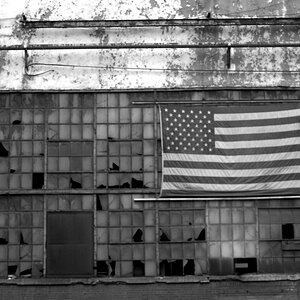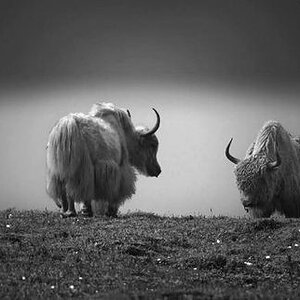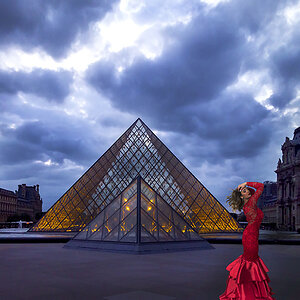Hello all, I am a photo junkie!! I admit however I have used the auto settings and I am ready to move up. I have done a bit and usually just change things until the histogram looks good, but wanted some input. I am doing a Sr. shoot this afternoon and would love some recommendations. I have a Canon 40D and it is going from sunny to overcast here where I am and wonder if you all have any suggestions. 
Navigation
Install the app
How to install the app on iOS
Follow along with the video below to see how to install our site as a web app on your home screen.

Note: This feature currently requires accessing the site using the built-in Safari browser.
More options
You are using an out of date browser. It may not display this or other websites correctly.
You should upgrade or use an alternative browser.
You should upgrade or use an alternative browser.
New to manual settings
- Thread starter PhotoBear
- Start date
They have done fairly well. I also now have CS4 so tonight after my crew (4 kids) go to bed I will be experimenting with that and figured the more RAW I went with the shoot the more editing opportunities I would have.
- Joined
- Dec 16, 2003
- Messages
- 33,896
- Reaction score
- 1,853
- Location
- Edmonton
- Website
- www.mikehodson.ca
- Can others edit my Photos
- Photos NOT OK to edit
Welcome to the forum.
I agree, a photo shoot isn't really a time to go trying something new...at least not unless you have a lot of time and get get the shots you need first.
Shooting in manual can be great, sometimes it's essential. But really, there is no difference between a shot in manual, auto, shutter priority or aperture priority....if the settings end up the same. They are just different paths to take, that can get you to the same destination.
You can still use the camera's light meter while in manual. Just look in the viewfinder or on the top screen. You can adjust the settings until the 'needle' gets to the ---0---. That will give you the same exposure as any of the auto modes (with no compensation).
You can adjust the exposure away from ---0--- if that's what you want to do. You can do that in manual by changing any of the settings....or you can do it in the auto modes by adjusting the EC (exposure compensation).
More important than what mode you are using...is your actual exposure and how it makes your image look.
Metering can be fairly important. For example, what are you pointing the camera at when you get your exposure settings? What metering mode? The meter isn't necessarily accurate in that it gives you the best exposure...it just gives you exposure for 18% grey. But if what you're metering isn't that tone, then the exposure will be off...so you may need to compensate the exposure away from ---0---.
Of course, with digital, you can shoot, check the exposure and shoot again. You can also bracket your shots...shoot several with different exposures.
I agree, a photo shoot isn't really a time to go trying something new...at least not unless you have a lot of time and get get the shots you need first.
Shooting in manual can be great, sometimes it's essential. But really, there is no difference between a shot in manual, auto, shutter priority or aperture priority....if the settings end up the same. They are just different paths to take, that can get you to the same destination.
You can still use the camera's light meter while in manual. Just look in the viewfinder or on the top screen. You can adjust the settings until the 'needle' gets to the ---0---. That will give you the same exposure as any of the auto modes (with no compensation).
You can adjust the exposure away from ---0--- if that's what you want to do. You can do that in manual by changing any of the settings....or you can do it in the auto modes by adjusting the EC (exposure compensation).
More important than what mode you are using...is your actual exposure and how it makes your image look.
Metering can be fairly important. For example, what are you pointing the camera at when you get your exposure settings? What metering mode? The meter isn't necessarily accurate in that it gives you the best exposure...it just gives you exposure for 18% grey. But if what you're metering isn't that tone, then the exposure will be off...so you may need to compensate the exposure away from ---0---.
Of course, with digital, you can shoot, check the exposure and shoot again. You can also bracket your shots...shoot several with different exposures.
pbelarge
TPF Noob!
- Joined
- Feb 11, 2010
- Messages
- 2,680
- Reaction score
- 0
- Location
- New York
- Can others edit my Photos
- Photos OK to edit
I would shoot these in Raw-Jpeg
this way you can almost experiment with the settings while having raw to fall back on.
I would also bracket the shots this way it will also give you some leeway.
Experimenting with manual settings on your shoot, will be like bungee jumping. Once over the railing there is no going back................. :mrgreen:
:mrgreen:
this way you can almost experiment with the settings while having raw to fall back on.
I would also bracket the shots this way it will also give you some leeway.
Experimenting with manual settings on your shoot, will be like bungee jumping. Once over the railing there is no going back.................
Thanks you all. May have to use more experimentation time with my little ones. I get great shots (I seem to have a gift for that) just ready to go to the next level. Have some great opportunities coming up and just want to be sure to capture what the clients are looking for.
Hoping with some of my proceeds to upgrade/add some more equipment. I will be asking about your alls recommendation on that too!
Hoping with some of my proceeds to upgrade/add some more equipment. I will be asking about your alls recommendation on that too!
ghpham
TPF Noob!
- Joined
- Dec 16, 2007
- Messages
- 532
- Reaction score
- 0
- Can others edit my Photos
- Photos OK to edit
Metering can be fairly important. For example, what are you pointing the camera at when you get your exposure settings? What metering mode? The meter isn't necessarily accurate in that it gives you the best exposure...it just gives you exposure for 18% grey. But if what you're metering isn't that tone, then the exposure will be off...so you may need to compensate the exposure away from ---0---.
Of course, with digital, you can shoot, check the exposure and shoot again. You can also bracket your shots...shoot several with different exposures.
Hmm...What would your recommendation for metering and WB? would you use a gray card at the scene to meter and preset the WB?
Hello all, I am a photo junkie!! I admit however I have used the auto settings and I am ready to move up. I have done a bit and usually just change things until the histogram looks good, but wanted some input. I am doing a Sr. shoot this afternoon and would love some recommendations. I have a Canon 40D and it is going from sunny to overcast here where I am and wonder if you all have any suggestions.
Forgive me if I am wrong here, but I get the feeling from you post you don't have a good working relationship of ISO, Aperture and Shutter Speed. Once you have those down and understand the proper operation of the meter in your camera, as suggested by other posters, shooting in manual can be fairly easy to do and you will have the ability to achieve looks that an automatic mode can not.
If you don't have this [ame="http://www.amazon.com/Understanding-Exposure-Photographs-Digital-Updated/dp/0817463003"]book[/ame], it would be a good one to get you started.
JillH
TPF Noob!
- Joined
- Mar 18, 2010
- Messages
- 35
- Reaction score
- 0
- Location
- Western PA
- Can others edit my Photos
- Photos OK to edit
I might be a bit out of line making a suggestion here because I'm not nearly as knowledgeable or skilled as many of the other contributors, but I'll throw out my "beginner's" 2 cents worth. I moved away from the auto settings recently myself, and found that, to get a 'feel' for manual, that working in just either shutter or aperture priority to start with was a good transition for me. That way, I only worried about setting one variable correctly at a time. From there, I started fooling with the full manual mode and experimenting with it.
By no means have I master any of these modes with any consistency yet, but I am becoming more comfortable with them, and how my photos will look at different settings. It just takes a bit of patience and practice.
By no means have I master any of these modes with any consistency yet, but I am becoming more comfortable with them, and how my photos will look at different settings. It just takes a bit of patience and practice.
Kansasdude
TPF Noob!
- Joined
- Mar 29, 2010
- Messages
- 38
- Reaction score
- 0
- Location
- Clearwater, Kansas
- Can others edit my Photos
- Photos OK to edit
Where manual mode can be most useful is when doing indoor shoots in a fixed location where the lighting isn't going to be changing from shot to shot. Once you dial in the exposure you'll have consistent exposure from shot to shot, even when your subject moves in frame. Auto exposure can sometimes misread the scene because it's suddenly metering on the background rather than the subject.
- Joined
- Dec 16, 2003
- Messages
- 33,896
- Reaction score
- 1,853
- Location
- Edmonton
- Website
- www.mikehodson.ca
- Can others edit my Photos
- Photos NOT OK to edit
Metering can be fairly important. For example, what are you pointing the camera at when you get your exposure settings? What metering mode? The meter isn't necessarily accurate in that it gives you the best exposure...it just gives you exposure for 18% grey. But if what you're metering isn't that tone, then the exposure will be off...so you may need to compensate the exposure away from ---0---.
Of course, with digital, you can shoot, check the exposure and shoot again. You can also bracket your shots...shoot several with different exposures.
Hmm...What would your recommendation for metering and WB? would you use a gray card at the scene to meter and preset the WB?
A grey card can be a great way to meter a scene and/or get a custom WB setting. There are also some other white balance cards that can be useful. Personally, 95% of the time, I shoot in Auto WB...but I shoot in RAW so that I can adjust the WB afterward. As for metering, I think the important thing is to realize when a scene could be throwing your meter off...so that when you aren't getting the results you want, you can recognize why, and make the proper adjustments.
Understanding Histograms
Expose Right
Thanks everyone! As you are correct I am really new at this piece. Yesterday was a great shoot and now on to editing... Keep the great suggestions coming. I am looking forward to learning lots of good stuff here. You all are really great!! 
Boomn4x4
TPF Noob!
- Joined
- Mar 15, 2010
- Messages
- 766
- Reaction score
- 4
- Location
- Ohio
- Can others edit my Photos
- Photos OK to edit
Shooting in manual can be great, sometimes it's essential. But really, there is no difference between a shot in manual, auto, shutter priority or aperture priority....if the settings end up the same. They are just different paths to take, that can get you to the same destination..
If the settings end up the same, of course.... but that is the purpose of using manual, so that you have control over the settings. I think its a little out of line to be suggesting to someone who is interested in learning about photography that shooting in auto is, for all practical purposes, the same as shooting in full manual. And it is certainly out of line to suggest that they are just different paths to the same destination.
I promise you, if I gave 10 people the exact same camera, and the exact same scene to shoot; 1 of them was on auto, 1 shutter priority, 1 aperture priority, 1 manual, 1 program auto, and let the other 5 pick mode what ever they wanted, you would end up with 10 VERY differnt pictures... while all of them being technically "correct".
But to answer the question, I suggest you start by playing with either your aperture or shutter. The KEY is to use and trust your meter. Take your pick at what setting you want to play with, start with the lowest setting and then adjust the other setting until the meter shows a correct exposure. Take a picture of a scene. Then click that setting up one stop and adjust the other setting until your meter reads correct. Keep doing this until you get a good feel for what changing that setting does for you. Then switch to the other setting and play with that inversely.
To get started, the only thing you really need to know is that aperture will change your depth of field, shutter speed will freeze or expose motion.
- Joined
- Dec 16, 2003
- Messages
- 33,896
- Reaction score
- 1,853
- Location
- Edmonton
- Website
- www.mikehodson.ca
- Can others edit my Photos
- Photos NOT OK to edit
I disagree. You seem to be forgetting about Exposure Compensation (EC). Using EC, you can have full control over your exposure in any of the auto modes.If the settings end up the same, of course.... but that is the purpose of using manual, so that you have control over the settings. I think its a little out of line to be suggesting to someone who is interested in learning about photography that shooting in auto is, for all practical purposes, the same as shooting in full manual. And it is certainly out of line to suggest that they are just different paths to the same destination.
So there really is no difference between using say, aperture priority and +1 EC and using manual and adjusting the settings (same chosen aperture) to one stop over the meter reading. Two different ways to get to the same exposure.
Of course, different apertures/shutter speeds can give you different results with the same exposure, but you can still control that in any of the 4 primary modes.
I disagree with this (as stated anyway).The KEY is to use and trust your meter.
The meter doesn't know what you are shooting...it only know how much light it's reflecting...and only in the selected metering areas. If you scene (or the metered parts) are not mid-toned (18% grey), then your meter will give you settings that are not technically correct. For example, a person standing in a field of snow, will result in an underexposed shot, if you follow the meter. Same thing with a mostly dark scene, it will end up overexposed with the default meter reading.
The key...is to understand what the meter is doing...and trust that it is always trying to expose for an 18% grey scene. If you meter something that is brighter, you would need to add exposure above the meter. If it's darker, you would need to subtract exposure to be technically accurate.
But in the end, photography is an art form...and thus 'technically accurate' doesn't really apply. If the photographer wants their photo to be brighter or darker, those are decisions they are allowed to make.
Boomn4x4
TPF Noob!
- Joined
- Mar 15, 2010
- Messages
- 766
- Reaction score
- 4
- Location
- Ohio
- Can others edit my Photos
- Photos OK to edit
I disagree. You seem to be forgetting about Exposure Compensation (EC). Using EC, you can have full control over your exposure in any of the auto modes.If the settings end up the same, of course.... but that is the purpose of using manual, so that you have control over the settings. I think its a little out of line to be suggesting to someone who is interested in learning about photography that shooting in auto is, for all practical purposes, the same as shooting in full manual. And it is certainly out of line to suggest that they are just different paths to the same destination.
So there really is no difference between using say, aperture priority and +1 EC and using manual and adjusting the settings (same chosen aperture) to one stop over the meter reading. Two different ways to get to the same exposure.
Of course, different apertures/shutter speeds can give you different results with the same exposure, but you can still control that in any of the 4 primary modes.
I disagree with this (as stated anyway).The KEY is to use and trust your meter.
The meter doesn't know what you are shooting...it only know how much light it's reflecting...and only in the selected metering areas. If you scene (or the metered parts) are not mid-toned (18% grey), then your meter will give you settings that are not technically correct. For example, a person standing in a field of snow, will result in an underexposed shot, if you follow the meter. Same thing with a mostly dark scene, it will end up overexposed with the default meter reading.
The key...is to understand what the meter is doing...and trust that it is always trying to expose for an 18% grey scene. If you meter something that is brighter, you would need to add exposure above the meter. If it's darker, you would need to subtract exposure to be technically accurate.
All you are talking about exposure... I'm talking about what you can do with manual settings.
A picture of a rolling wave with an F/4 @ 1/500", F/5.6 @ 1/250", F/8 @ 1/125", F/11 @ 1/60", and F/16 @ 1/30.... and you will most certainly not end up at the same destination.
Similar threads
- Replies
- 2
- Views
- 433
- Replies
- 18
- Views
- 3K
- Replies
- 1
- Views
- 502
- Replies
- 9
- Views
- 703
- Replies
- 5
- Views
- 462


![[No title]](/data/xfmg/thumbnail/37/37129-2b15d9f6bc8d43c2c1247a6c591d14aa.jpg?1619737884)
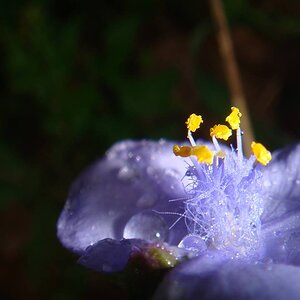
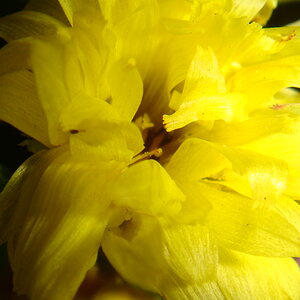
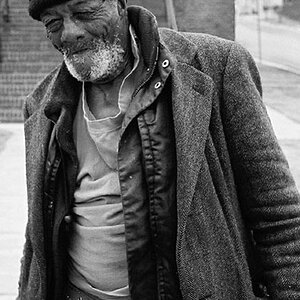
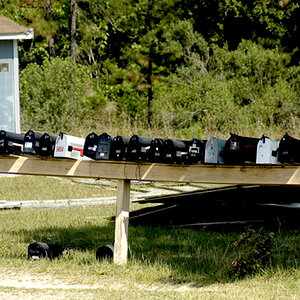

![[No title]](/data/xfmg/thumbnail/42/42067-88a229e814afcfc8848b3e293d8113d9.jpg?1619739998)
